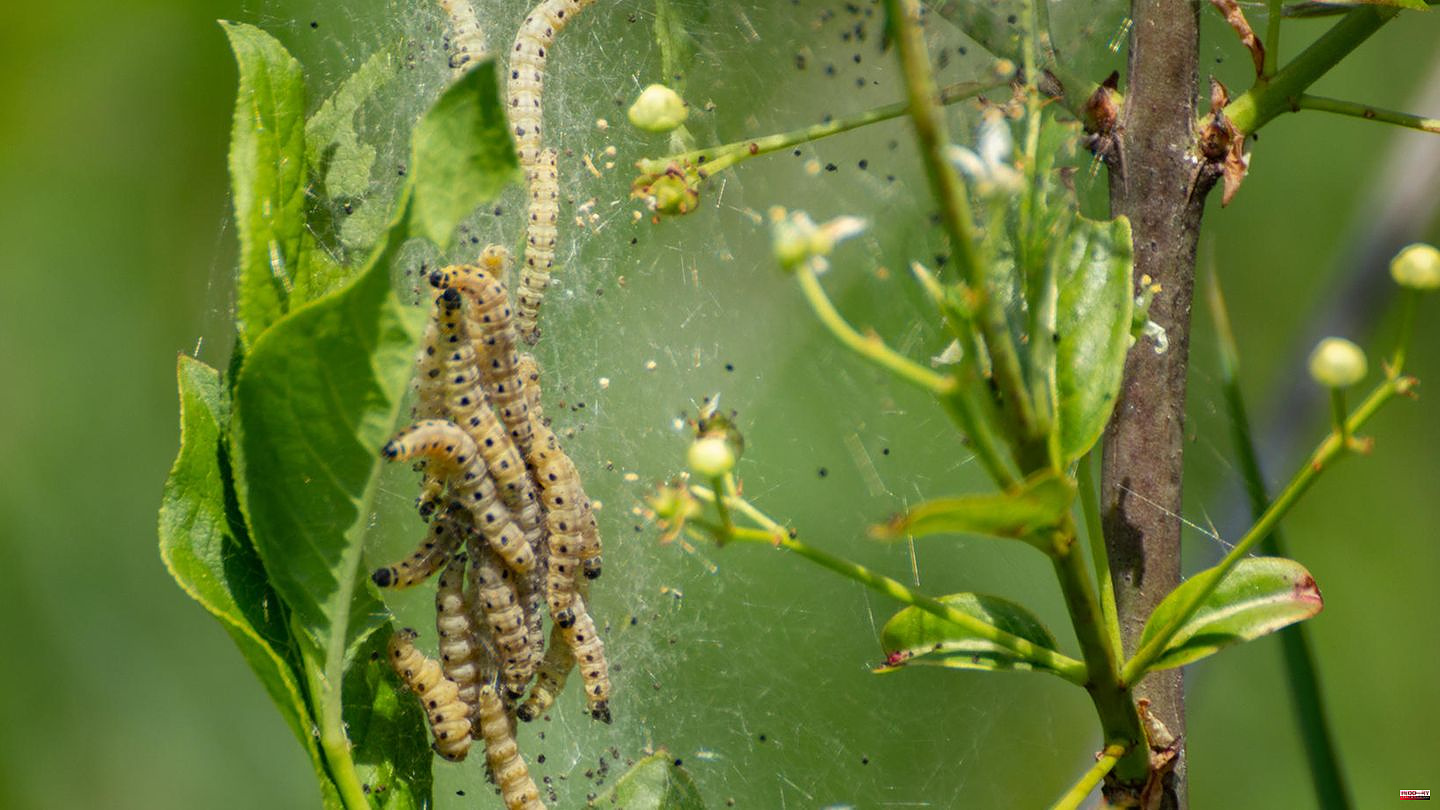The species of moth owes its name to the webs that serve its descendants as a kind of protective barrier against predators such as birds or against rain. Their "webs" are easily confused with those of the oak processionary moth. However, the caterpillars of the spider moth are by no means dangerous for humans - they are for fruit trees and bird cherry, willow and poplar, hawthorn and spindle tree. If the infestation is not discovered, the pests eat entire trees and bushes bare. In the following you will learn everything about the life cycle of the spider moth and how you can combat the annoying insects quickly and effectively.
First the good news: the pest usually only targets a certain tree species, which is why there are bird-cherry spider moths (Yponomeuta evonymella) as well as apple spider moths (Yponomeuta malinellus). They leave other trees alone. The bad news: once the moths have laid their eggs, a real mass infestation can occur. Unfortunately, climate change has also contributed to the fact that the moths reproduce more and more, as they prefer warm and dry areas. But they can also withstand low temperatures without damage. In order to better understand the animals, we would like to go into the life cycle of a spider moth generation at this point.
Depending on the type of spider moth, the insects have high season between June and August: the females lay their eggs on twigs and young shoots and cover them with a secretion that is supposed to protect them. Just a few weeks later, the first offspring hatch, which are responsible for the white-silver web in bushes and trees. If you have eaten your fill of the leaves, the caterpillars pupate in June - and two weeks later they are ready moths that want to mate. And so the cycle starts all over again: the female lays her eggs in the plant buds, where they survive until the following spring. In other words, in a year there is usually a new generation of spider moths.
Like many insects, the spider moth is also quite small: it measures just one centimetre. Nevertheless, it is conspicuous because it has white-grey wings with small black dots on them. In contrast to the oak processionary moth, for example, the moth has no hair on its body. The larvae of the spider moth have a black head, are usually dark green to brown in color and have a black dot on each side. If you look closely, you can even see fine hairs on the body.
The finished caterpillars, on the other hand, are more cream-colored to yellowish and - like the adult moth - have black dots distributed over the entire body. To protect themselves from external weather influences and predators, the caterpillars pull whitish webs around them. A sure sign that you have discovered a spider moth infestation. Then at the latest it will be time to act quickly. Before your fruit trees or bird cherry, willow or poplar, hawthorn or spindle tree are extensively damaged.
According to the Naturschutzbund Deutschland e. V. you should not fight spider moths with poison. The reason is simple: "Natural enemies are also affected by insecticides". Apart from that, it should be almost impossible to fight the caterpillars with a bee-friendly plant protection product (based on Bacillus thuringiensis) when they have already spread their fine webs in the trees and bushes - the biocides would simply roll off them like rainwater. Instead, the better solution to avoid major damage would be to collect the animals by hand. Anyone who is disgusted by it should at least wear gloves – or cut off the affected branches and twigs together with the webs instead of the individual nests.
However, it is important to know that if the caterpillars sense danger, they will rope down to the ground on a thin thread in a matter of seconds. Only to climb back up the trees a short time later and continue their binge. For this reason, it is advisable to put a large white sheet on the ground beforehand to collect any runaways. Or you attach a special glue ring to the tree trunk to which the animals stick. It is available ready-to-use with a fastening cord, as a spray and in a tube or bucket for brushing on. Alternatively, you can also use a water hose to remove the webs from the trees.
Note: Do not dispose of the collected webs and caterpillars in the compost, the animals would spread further from there. Instead, it is better to take the sections to a waste disposal center or dispose of them (in a sealed bag) with the residual waste.
Another way to combat spider moths is to support their natural predators (such as birds, parasitic wasps and assassin bugs). The animals feel particularly comfortable in natural areas, which is why insect-friendly gardens are preferable. And the best thing about it is that the predators ensure that the pests cannot spread too much. And if they do, we have good news at the end: As soon as the caterpillars have pupated, the feeding session ends. In addition, most trees and shrubs usually recover from being cleared by the spider moth - at least by next spring.
Sources: My beautiful garden, Utopia, NABU
This article contains so-called affiliate links. Further information are available here.












